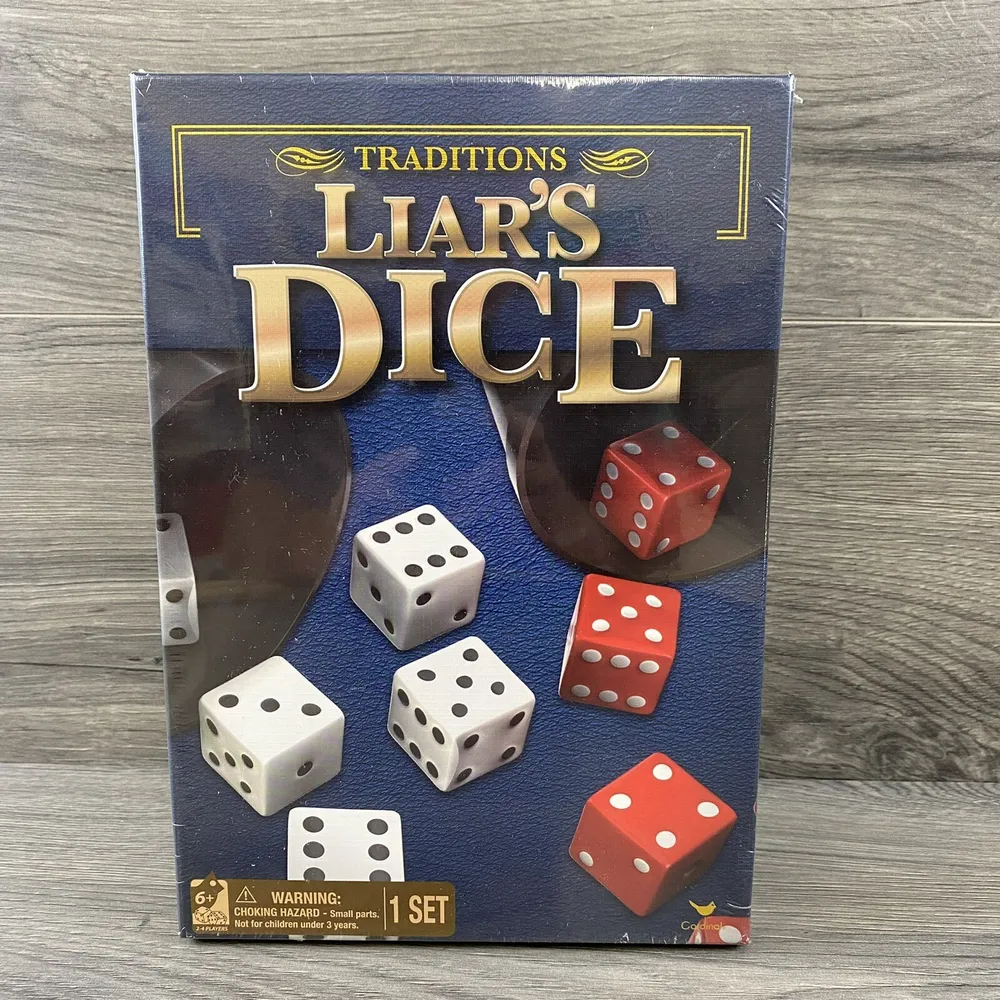Perudo (1800)
Liar’s Dice: A Popular Bluffing Board Game
Liar’s Dice is a popular bluffing board game that originated as “Dudo” during the 15th century in the Inca Empire and later spread to Latin American countries and European countries via Spanish conquistadors. The game gained popularity in the 1970s when numerous commercial versions were released. Liar’s Dice is known by different names, such as Bluff in German and Perudo or Dudo in Spanish.
Game Components of Liar’s dice:
Each player has a set of dice and a dice cup, with five dice per player.
Game Setup of Liar’s dice:
Players sit in a circle and take turns to roll their dice, concealing them under their cups.
Gameplay Mechanics:
Players take turns to guess or bid on the number of dice of a particular value under everyone’s cups.
Game Objective of Liar’s dice:
The goal is to catch your opponent in a lie and call them out, while also avoiding being caught in your own lie.Liar’s Dice can be played with 2 or more players and is popular in various parts of the world, including Latin America, where it is known as “Perudo” or “Dudo”. The game has been adapted into electronic versions, where the computer learns your strategy and requires players to think of new ways to bluff their way to a win.
Game Components of Perudo
How To Setup Perudo
To set up Perudo, each player receives 5 dice and a cup. The game begins with a random player or the player who lost a die most recently. Players shake their dice in the cups, then carefully examine their rolls without revealing them to others.
Gameplay Mechanics and Game Objective
Player Experience
Perudo is a game of bluffing and social interaction where players must navigate the fine line between probability and psychology. It’s not just about calculating odds but also about manipulating the perception of probability and deceiving other players. The game is highly engaging, especially in larger groups, and encourages banter and strategic thinking.
Pros
Cons
Personal Thoughts on Perudo
Perudo is ideal for those who enjoy bluffing games and social interaction. It’s perfect for parties and casual gatherings, offering a fun and engaging experience that combines strategy with psychological manipulation. While it may not be the best fit for those seeking a purely strategic game, it is excellent for anyone looking to enjoy a lively and entertaining game night with friends. However, be prepared for the game to stretch out if you’re playing with a larger group, and be aware that player elimination can occur early, leaving some players to mingle while others continue the game.
We are supported by our audience. When you purchase through links on our site, we may earn an affiliate commission, at no extra cost for you. Learn more.

